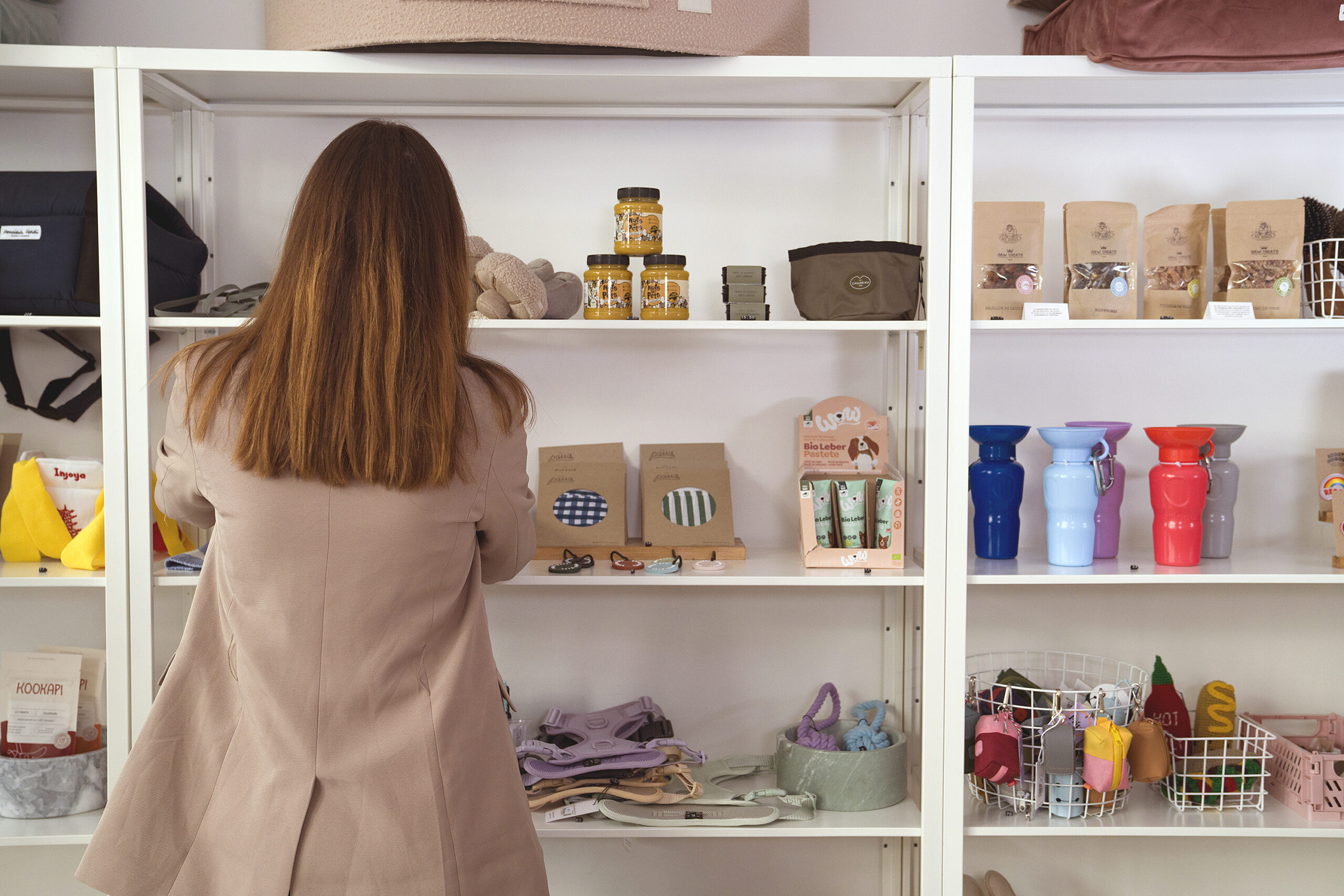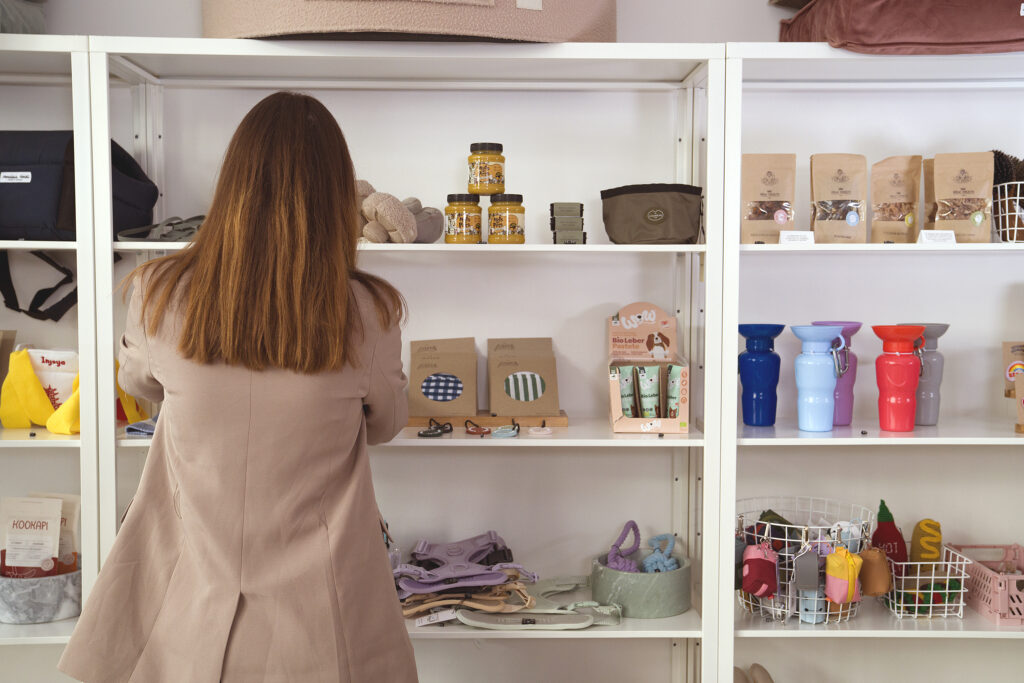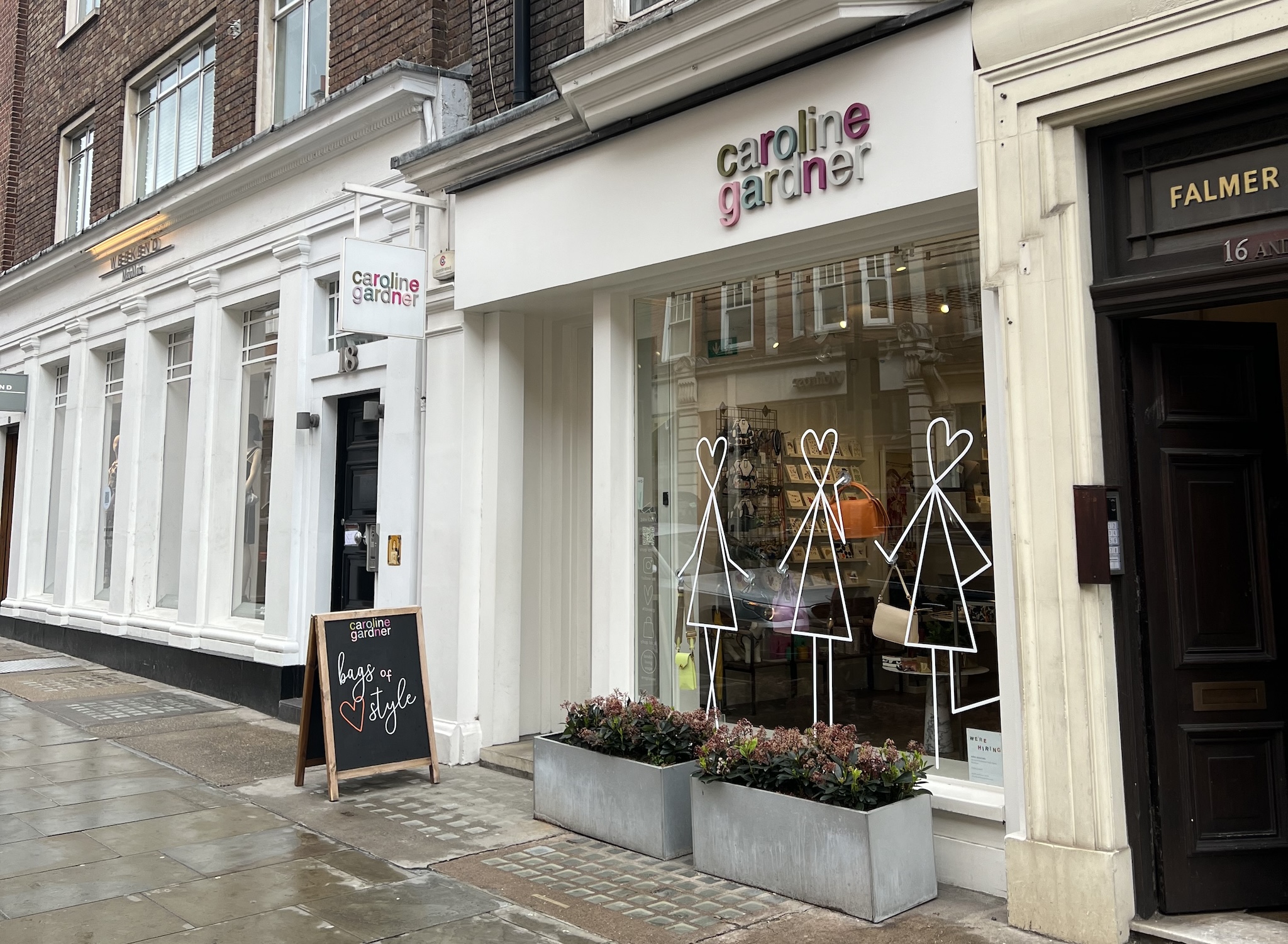

As a small business owner with more than 15 years of experience in corporate retail, Kristin Fisher loves talking about all things small business and retail. She worked primarily as a buyer for major brands like Urban Outfitters and Land’s End before founding Bocu, a gifting solution that makes it easier to send a thoughtful gift without sacrificing your style or standards. As the business grew, she realized many entrepreneurs don’t have the same corporate retail knowledge and could benefit from her retail strategy coaching. She’s been featured on podcasts such as The Empowered Publicity Podcast, Crush the Rush, and The Consistency Corner and recently shared her expert knowledge with the Faire community during our first-ever Entrepreneur Faire. We’ve put together some of Kristin’s best tips to increase profits and visibility in the retail world (and some common pitfalls to avoid) whether you’re buying or selling.
Start small but chase big-dream partners
Brands and retailers are always advised to start small and aim for achievable growth. That doesn’t mean you can’t shoot for the stars, though, when reaching out to your dream partners.
For brands, Kristin suggests creating a Google spreadsheet with all the stores you want to be in—both small and large—then focusing on a few prospects at a time. “Make your huge list and then start small with who you’re going to reach out to,” she says. You can also add any new prospects you come across to the spreadsheet as a way of easily tracking when you first connected with them and to ensure you follow up in a timely manner.
Build genuine relationships with partners
Retailers, buyers, brands, and makers are often inundated with pitches and marketing outreach emails. To avoid getting lost in the shuffle, the very first thing you should do is build a relationship with new partners and prospects. “I know that’s not an earth-shattering thing to say, but it’s so important to remember,” says Kristin.
She suggests making a detailed plan to cultivate relationships with new and prospective partners via email and sending personal messages rather than simply using copied-and-pasted emails. “Of course, you can copy-paste sections of your email, but really tailoring it and taking that extra little step to say ‘I have done my research and feel that I’m the perfect fit for you goes such a long way,” she says. One initial intro email isn’t enough to cut through the static, though, so “follow-up is key to expressing your interest and staying top of mind.”
Social media is also essential for building authentic relationships with new and prospective partners. In addition to platforms like Instagram, Kristin recommends leveraging LinkedIn to find retail partners. “This is especially useful for finding the right buyers at major retailers,” she says. You’ll also want to do more than just like or comment on posts; instead, genuinely engage with brands or buyers in the digital space.
Be clear on inventory and top sellers
Whether you’re buying merchandise for a retail shop or selling the products that you created, it’s important to understand your top sellers and have a clear inventory plan. “Regardless of what’s going on economically, with your inventory you want to be really clear on the needle-movers— your volume drivers and the styles that are going to actually make or break your business,” Kristin says. “Nine times out of 10, about 80% of your sales are going to come from about 20% of your assortment offering.”
It’s critical for retailers to invest properly in their bestselling products with an understanding of when makers will be able to get the products back in place, especially ahead of important dates like Black Friday. Kristin adds that it’s important to keep other items in stock to round out your collection, but you can be more prudent with order sizes on slower-selling items.
You should also be clear on the lifespan of any new products you bring in and aim for a good mix of evergreen products that are carried year-round, seasonal items, and special collections. Kristin recommends estimating how much inventory you’ll likely need for a product’s lifespan, then buying 70% to 80% of that estimate to achieve a more accurate inventory picture and better cash flow.
Brands and makers should know what their bestsellers are and ramp up production of those items months ahead of important retail sales seasons. Kristin suggests creating a calendar for product drops so you can plan out your product flow in advance and communicate clearly with B2B customers about estimated order fulfillment times.
Avoid an over-assortment of products
Brands and retailers should avoid becoming over-assorted with too many inventory choices, though Kristin admits “it’s very easy to do when we’re product people.” Brands can get too excited about designing and creating new merchandise, and retail buyers can easily fall in love with all the products they find on Faire or at a trade show, but she warns that too much choice is not always a good thing.
“It’s a big disservice to do that to your bottom line because customers then get confused about what you stand for, and they’re not really sure what to buy,” she says. “So it’s really important to reduce your SKU count and have a plan in place on how to do that.”
In her retail coaching business, Kristin works with clients one-on-one to figure out the right balance of inventory so they can hit sales goals, maintain profit margins, and avoid overstock.
Don’t get off track with brand messaging
Maintaining a strong brand image and consistent messaging is at the core of any successful retail strategy, so Kristin also cautions against dropping the ball with your brand messaging for top-selling products.
“I’ve definitely done this one—you’re fulfilling orders, you’re making the product, you’re packaging, you’re doing customer service, you’re dealing with shipping, and it’s really easy to spiral and forget that these are the top styles,” she says. “Making your message about those styles really clear, and not being all over the place, is crucial.”
According to Kristin, customers need to know what you think they should buy, so your brand messaging should focus on those key volume-driving styles.
Increase visibility with SEO and collaborations
When it comes to increasing visibility, Kristin says search engine optimization (SEO) and collaboration are king.
SEO—the process of directing targeted traffic from search engine rankings to your website—takes time, but Kristin notes that “once it kicks in, it can pay off for years to come.” She recommends doing thorough research on relevant keywords related to your products and refreshing your list of keywords every few months using resources such as Google Trends or Pinterest to see what’s trending. These keywords can be used across blog posts, social media captions, web pages, and page titles. To see results, you’ll need to write unique product copy (including ALT tags) that explains the benefits of your products, why your products are different from or better than others, and/or what problems your products solve. If you don’t think that you or a member of your team can maintain SEO for your brand, outsourcing these tasks is well worth the investment.
Strategic collaborations can also help increase visibility of brands and retailers. You can organically grow your reach and visibility by positioning your brand alongside other brands with a similar demographic using strategies such as freebie swaps, gift guides, giveaways, or Instagram Live interviews. The right collaboration can put your brand in front of your ideal consumer as well as wholesale buyers and B2B partners looking for brands like yours.
Remember the social impact of your brand
The social impact of consumer spending has become more important in recent years, and brands have a unique opportunity to share their values and increase visibility with like-minded customers. “There are conversations happening that affect women’s rights, LGBTQ+ rights, gender issues, race issues—so it’s really important as small businesses, whether you’re a maker or a retailer, to be really clear on your brand values,” says Kristin.
She recommends aligning with people, brands, supply chains, and suppliers that are important to your brand. “Consumers have really woken up in the last few years and are putting their dollar where their values are, and I think that’s a trend that is here to stay,” she adds. Part of the beauty of being a small business owner, according to Kristin, is that you have the ability to keep your brand values intact whether you’re doing things behind the scenes or sharing loudly on social media. “It’s something that is exciting to see.”
If you want to learn more about Kristin Fisher’s retail strategy coaching, visit her online, listen to her podcast, The Profit + Product Pop-Up Podcast, or check out her new “Unlock Wholesale” workshop.




